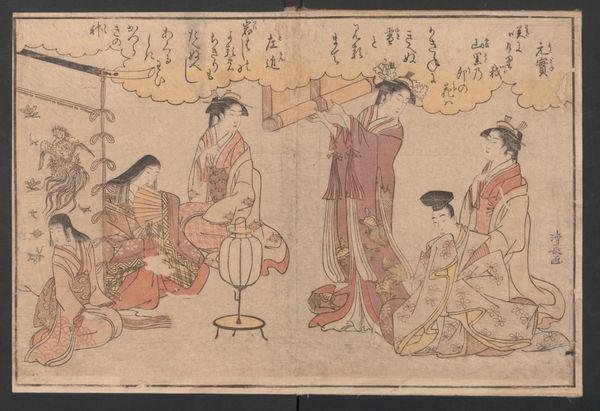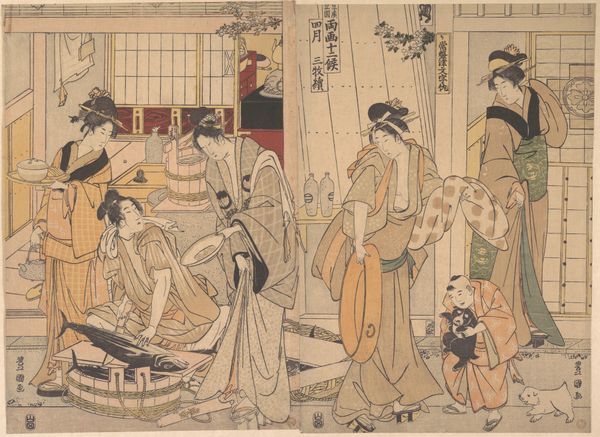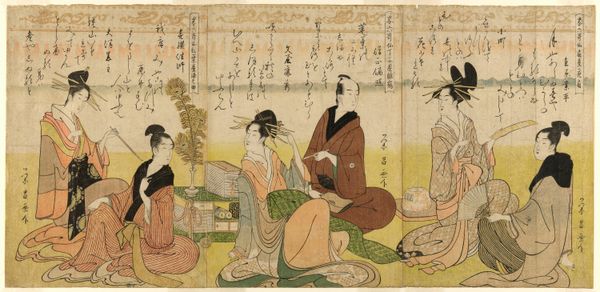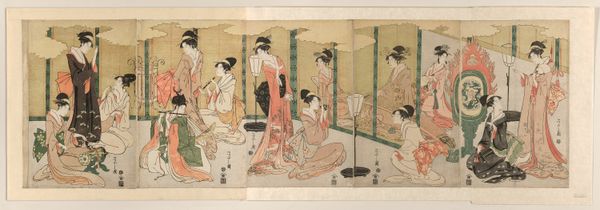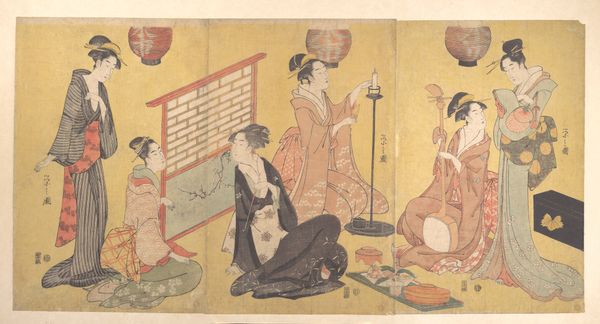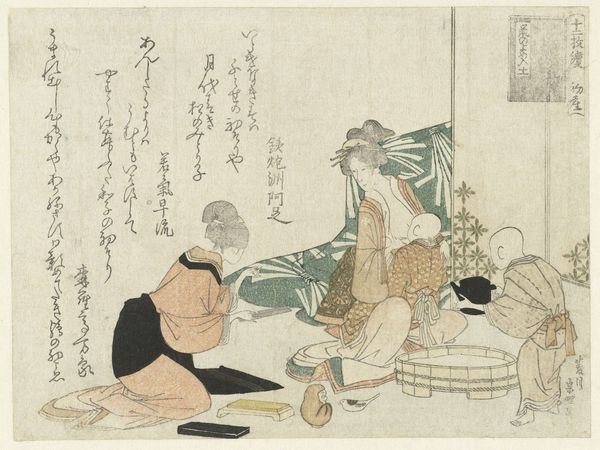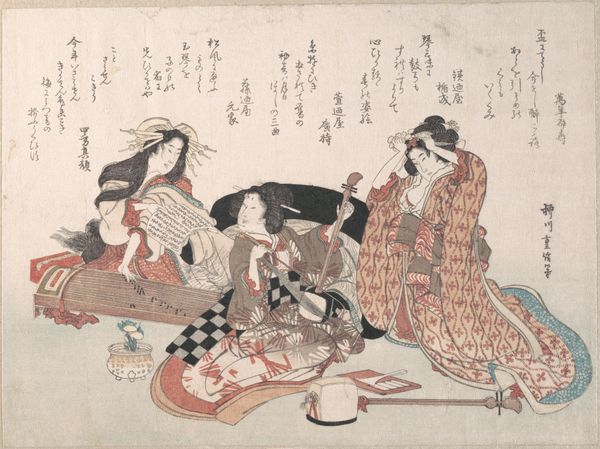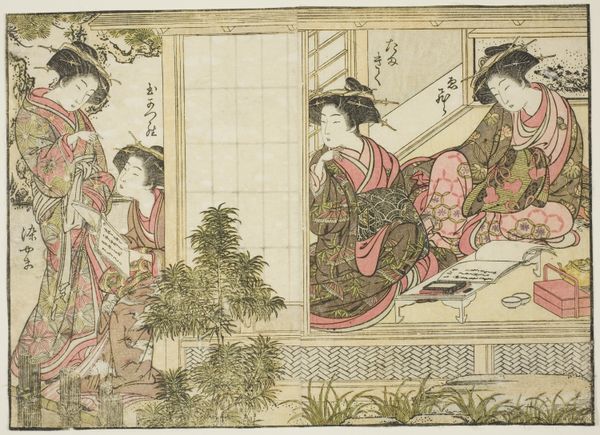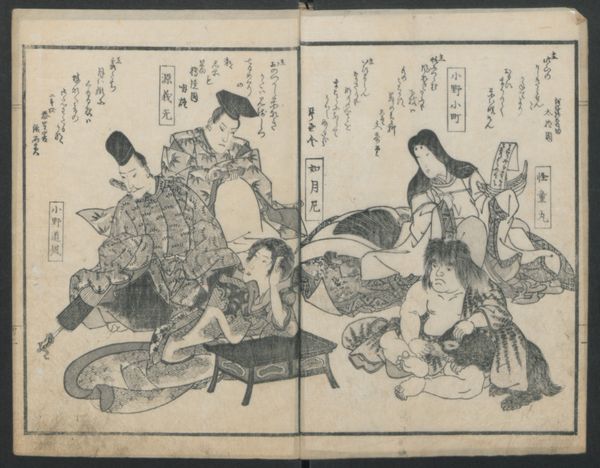
A New Record Comparing the Handwriting of the Courtesans of the Yoshiwara 1784
0:00
0:00
print, woodcut
#
portrait
# print
#
asian-art
#
ukiyo-e
#
figuration
#
woodcut
#
genre-painting
Dimensions: 14 15/16 × 10 1/4 in. (38 × 26 cm)
Copyright: Public Domain
Editor: This fascinating diptych, "A New Record Comparing the Handwriting of the Courtesans of the Yoshiwara," by Kitao Masanobu, from 1784, is a woodcut print that's currently at the Met. The intimate, interior scene is quite captivating. What significance do you think handwriting might have held, presented this way? Curator: Handwriting is loaded, isn't it? Even now, but especially then, think of calligraphy. In this context, the handwriting, along with the poems, acted as a direct link to the individual, to their inner selves and aesthetic sensibilities, especially important for courtesans. It granted them a form of expression beyond their profession. Think about it: can you see the cultural memory encoded in each brushstroke? Editor: So, their personality was directly reflected in their style of writing, as opposed to, say, just their appearance? Curator: Precisely. Handwriting allowed for a nuanced projection of self. Consider the imagery: The writing tools themselves - the brushes, inkstones - became symbols of refinement and artistic prowess, visually aligning the women with established traditions of scholarship and art. It’s a subtle act of self-elevation within a rigidly defined social hierarchy, don't you think? What emotions are conjured when we look at the diptych? Editor: I see... Almost a way of reclaiming power. There is an elegance to it all. Also, the details of daily life become a window into this vanished world, thanks to this type of print. Curator: Exactly! These prints, beyond their aesthetic appeal, serve as potent carriers of cultural memory, reminding us of the complexities and layered meanings embedded within seemingly simple objects. Editor: That is so enlightening, making me want to seek out more Ukiyo-e. Curator: Indeed, Ukiyo-e prints show us the deep value they give to symbolism, in art and daily life.
Comments
No comments
Be the first to comment and join the conversation on the ultimate creative platform.




